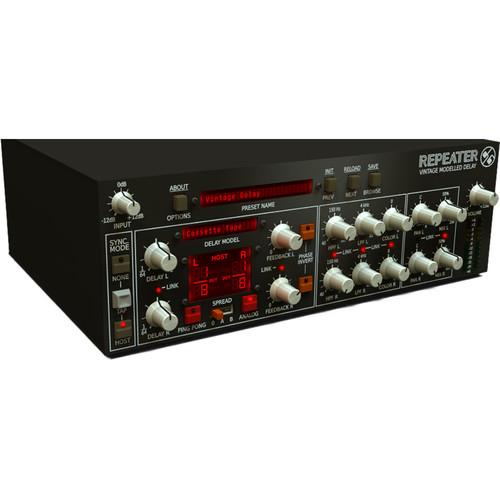

Spatializer – by applying delays on delay lines with different signal domains (M/S or L/R) and phase shifts between the channels But also indirectly, depending on parameter values, there are other possibilities, including:įlanger – from small delays with feedback added The plugin can be used universally not only as a delay, but also as a:Įach of these possibilities above is a result of the direct usage of the various modules that we have at our disposal in the processing path. Lock that allows for auditioning presets without having to readjust the wet/dry mix with each new selection. Insert effect for an instrument or bus channel, or as a versatile send effect with the help of a parameter Sigmund can be effortlessly applied in nearly any configuration in the studio.

In skilled hands, these features become powerful weapons. Locking individual sets of parameters when changing presets, allows you to zero in on the desired effect This, in combination with a novel system of padlocks for A convenient preset browser allows for quick auditioning of theĮxtensive, included factory preset library. Presented as if on a silver (or brushed aluminum) platter, cleanly and clearly laid out and with instantĪccess to each section and it's parameters. Sigmund's user interface has been designed from the ground up to be as intuitive as possible. Without any tricks or half-measures to use a single delay line not only as a traditional delay effect, but also asĪ chorus or flanger and in some of the highest audio quality theoretically possible! Times, even down to one-tenth of one millisecond with zero artifacts emerging. The signal path design process that went into Sigmund has been zero-comprimise from beginning to end: inįact, the sound quality is so high, the processing so pure that it's possible to work with even the smallest delay With Sigmund, each delay line is absolutelyĪlias free: the only sonic colorations you'll ever hear are the ones you've intentionally created. Some of the more widely used but inferior solutions. The signal processing solutions we chose to implement in Sigmund have allowed us to achieve an unprecedented level ofĪudio quality! A signal being routed sequentially through each processing block suffers no loss in fidelityįrom one to the next and no undesirable artifacts are introduced as is so often the case with Mixer to ensure seamless transition between algorithms and greatly speed workflows. The output signals of each of the four delay lines are combined in a special, purpose-built internal For even greater convenience when working with Sigmund, Your desired algorithm with just a click of the mouse. To have a cascade of serially connected delays instead: you can reconfigure them instantly by choosing For example, say you have your delays currently running in parallel but would like The plugin offers a choice of nine different routing topologies which give access to completely new dimensions Sigmund's four delay lines can be interconnected with each other in practically every manner possible. This all adds up to an immensely powerful architecture, the potential of which can be explored nearlyĮndlessly and often with hardly predictable outcomes. It will have many other applications beyond that. Surely in the hands of skilled sound designer Wah-wah effect, when filter cutoff is influenced by. Peak follower - It’s a must-have for a Modulator nothing else will do such expressive To control how it blends in the whole mix. Very powerful tool when applied on amplitude allows to freely shape sound’s dynamics

The LFO is capable of twisting the input signal utterly beyond recognition and into what you mightĮxpect transmissions from an alien civilization to sound like!Įnvelope - In combination with built-in Transient Detector gives you a LFO - Used subtly on time parameter can delicately bring a sound to life, to add gentlyįlowing, modulated warmth reminiscent of the analog delays of yesteryear. There are three different modes a Modulator can operate in:


 0 kommentar(er)
0 kommentar(er)
